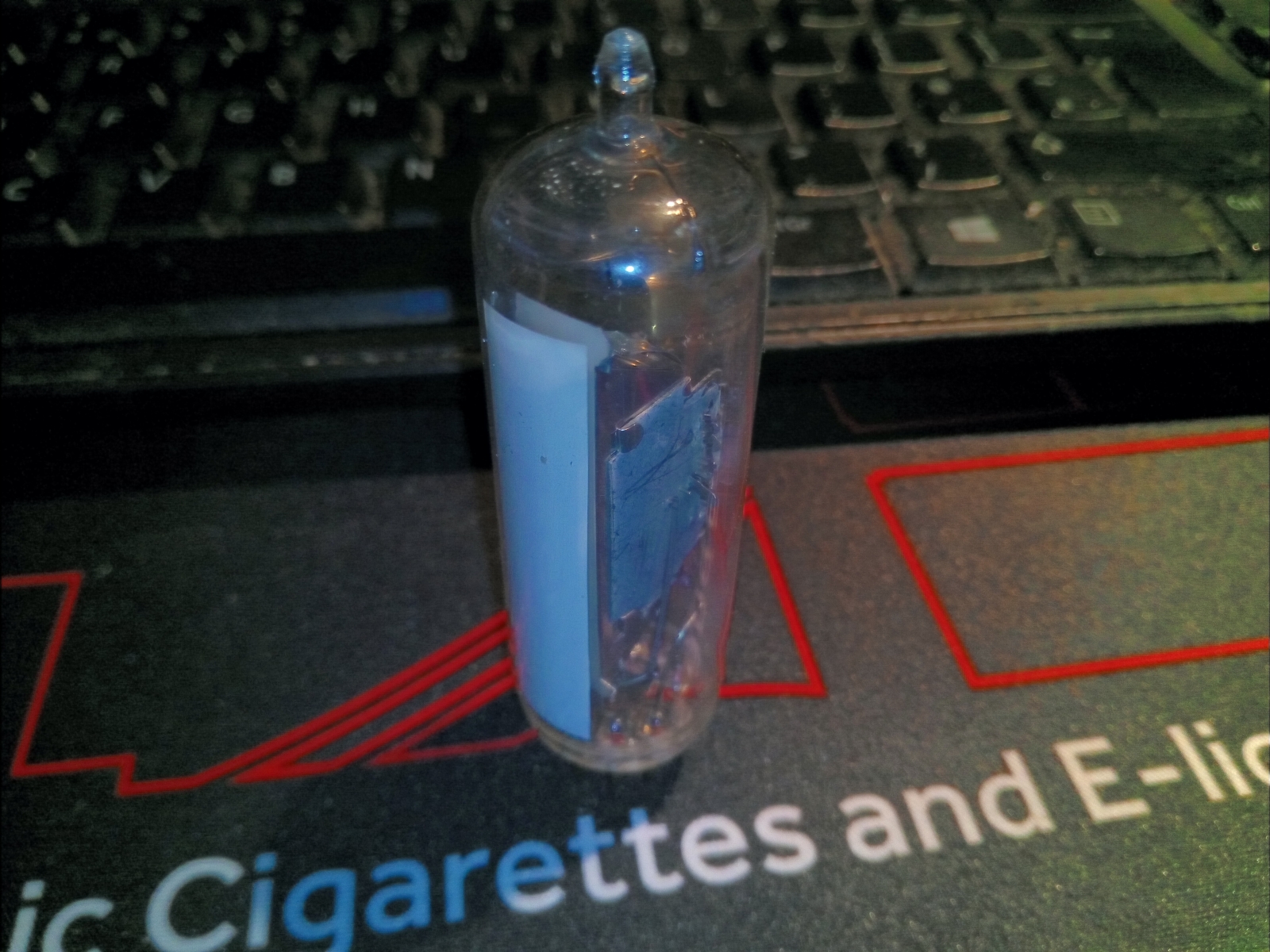EM84 Magic Eye Valve
The EM84 tuning indicator, or magic eye, was used to display the optimum tuning point of a receiver, or the recording level of a tape recorder. The main benefit in reception was for FM radio where the exact tuning point was harder to determine than for AM. This valve is in a standard thin glass tube envelope with a phosphor strip on the inside of the glass. The electrode structure is, like all such tuning indicators, based on a double triode with common cathode. The anode of the second triode is called the target and within the electron stream is a deflector electrode designed to alter the path of the electron beam, it would normally be connected to the anode. In the EM84 the quiescent condition was two green bars, one at each end of the window. As the signal strength increased the bars would elongate and eventually overlap to form a bright green region. The optimum point for tuning was a minimum gap. The EM84 when used in domestic reel to reel tape recorders as a recording level indicator was adjusted so that the optimum recording level was set when the bars just overlapped on sound peaks. The total column length change was 21 mm. Other tuning indicators with end windows would have round displays with variable percentages of the circumference illuminated. Mullard themselves styled the EM84 as a voltage indicator to denote the greater precision of build than was required for the simple task of a tuning indication where only the maxima was important.

